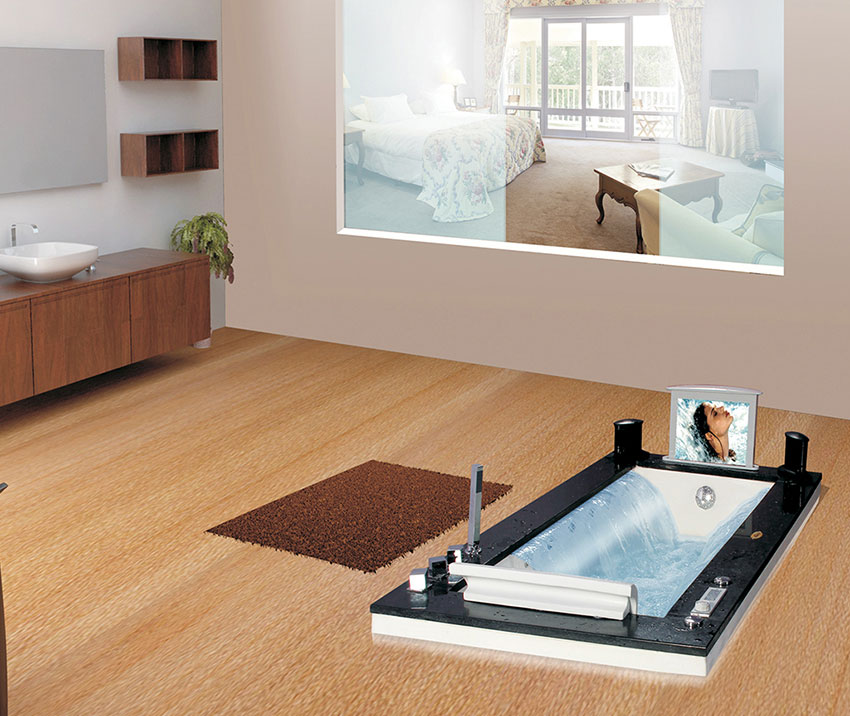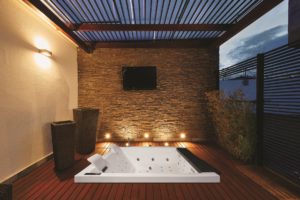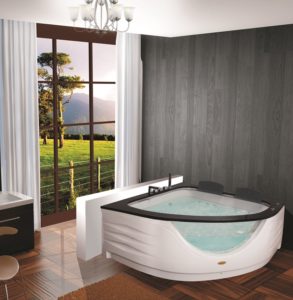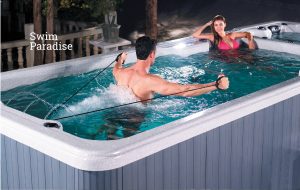Have you ever relaxed in a warm, bubbling bath at the end of a stressful day and felt your worries float away? There’s something about the warmth and movement of the water that calms both body and mind. Whirlpool tubs aim to recreate this therapeutic experience through systems of jets that massage away tension.
In recent years, whirlpool bathtubs have gained immense popularity as the centerpiece of home spas and wellness routines. The tubs seem ubiquitous in magazines, celebrity homes, and high-end renovations. However, as much as whirlpool bathtubs play into modern notions of self-care and luxury, the essential concept has enduring, traditional roots.
Across cultures and eras, people have turned to water for its restorative powers. Ancient civilizations recognized the value of bathing rituals and therapeutic spas. Whirlpool tubs of today represent how this time-honored tradition has evolved to meet modern needs and trends—with enduring appeal. Read on to delve into the history of water treatments, the emergence of recreational and jetted tubs, and why we still crave a good, long soak.
Water Works Wonders: Hydrotherapy Through the Ages
While whirlpool tubs feel on-trend, in essence they offer a modern take on hydrotherapy. Hydrotherapy refers to external water treatments aimed at improving health and wellbeing. Examples include baths, wraps, showers, underwater massages, and mineral springs.
Records indicate advanced bathing culture among early civilizations. Around 3000 BCE, Egyptians used bath houses for religious rituals, relaxation, and health purposes. Similarly, ancient Greeks and Romans designed elaborate public baths providing hot and cold soaks, an early form of hydrotherapy. Royals and other elites enjoyed private bathing spaces as well.
In Europe during the 17th-19th centuries, visiting mineral hot springs and “taking the waters” came into vogue. Doctors would send patients with certain maladies to spa towns believed to have healing properties. Common treatments involved soaking in, drinking, or moving through water.
Specific approaches under the hydrotherapy umbrella included:
- Scotch hose: powerful spray directed at certain injured or diseased body parts
- Plunge bath: quick cold water immersion to stimulate circulation
- Steam baths: sitting in suites filled with hot vapor
As scientific knowledge advanced, doctors better understood water temperature’s effects on heart rate, circulation, and other bodily functions. Hot soaks relaxed muscles while cold baths stimulated vital processes. Thus emerged more precise hydrotherapy techniques.
Whirl Your Way to Wellness
What we would recognize as whirlpool tubs began emerging in the mid-1800s. Some early models used hand-cranked paddles or air pumps to agitate the water. As indoor plumbing advanced, more convenient built-in systems developed.
In the 1960s, the Jacuzzi brothers’ new jets transformed the concept of recreational hot tubs. Drawing on their family history with hydrotherapy, Roy and Candido Jacuzzi created bubble bath massages using their eponymous whirlpool pumps. Backyard hot tubs boomed into a middle class craze.
That same decade, molded acrylic transformed tub manufacturing and affordability. Developed in 1954 by the Americans Reynolds and Sparks, easy-to-clean acrylic composite drastically expanded production of recreational tubs. These durable, inexpensive tubs soon moved from backyards into bathrooms.
Through the 1970s-90s, American households increasingly installed side jet and air bath upgrades to their tubs or replaced their old tubs entirely. Whirlpool and jetted tubs shifted from luxury novelty to standard amenity.
Today’s high-end market now offers all sorts of built-in pampering features. Programmable tubs provide customized massage settings, underwater mood lighting, even sound systems and aroma therapy. Top brands market the experience as much as the hardware, tapping into the allure of modern bath culture.
From Wellness Fad to Timeless Ritual
Currently whirlpool tubs ride high on a wave of wellness trends centered around self-care regimens and home spa experiences. The water jets purportedly soothe sore muscles, alleviate pain, reduce stress, and more through strategic hydro massage. Celebrities and influencers show off their marble-clad sanctuaries while touting physical and mental health benefits. For those seeking at-home pampering, whirlpool tubs promise a little luxury and TLC.
But how much of this wellness aura is enduring tradition versus passing fad?
Undeniably, the water itself offers time-honored benefits that appeal across eras. The warmth eases bodily aches and comforts the soul. Add to that the sensation of being expertly massaged by strategic jets. Just as ancient civilizations recognized water’s restorative properties, we too instinctively crave this soothing support.
While high-tech features may fade in and out of vogue, the desire to relax in steamy bubbles remains constant. The ritual speaks to nostalgia for bath houses of old. In a world full of slick devices and distraction, carved out time to soak and unwind holds enduring appeal.
At the same time, creating a relaxing bath experience need not require costly tub upgrades. Plenty of bath enthusiasts favor natural elements like salts, oils, candles, music, even wine or tea to set the mood. For those seeking to reduce consumption and return to simpler pleasures, whirlpools and other complex luxuries lose appeal. Nonetheless, virtually no one can resist settling into a good, long, peaceful soak from time to time.
Water Worlds Collide
As with many wellness fads, whirlpool tubs reveal tensions between ancient traditions and modern technologies. Yet they also fuse these worlds in many ways.
Built-in air jets and customized massage settings aim to improve upon age-old hydrotherapy. Programmable experiences cater to a user’s every mood and desired outcome. With a Jetsons-esque tub taking care of everything, what else remains to focus on but your wellbeing?
And yet, losing touch of bathing’s simpler roots may diminish its soul-soothing powers. Absent are herbs, salts, or oils used by cultures across eras to enhance the cleansing ritual. Disconnected from human touch or natural elements, high-tech hydrotherapy struggles to fully relax or rejuvenate some souls.
Nonetheless, whatever your preferred mode, water’s therapeutic wonders endure. Whirlpool tubs won’t replace every bathing practice passed down through generations. But they nod to these time-honored traditions while putting a modern wellness spin on soothing water treatments.
Take the Plunge
Whirlpool tubs fuse together traditional and modern bath culture—though tensions remain between tech-heavy luxury and back-to-basics nostalgia. Nonetheless, the underlying appeal endures across eras. The warmth, the massage, the escape from daily stress…could any wellness trend feel more soothing?
So while flashy features and specialty tubs may come and go, the desire to relax in whirling water remains constantly bubbling up through history. Call it a wellness fad or timeless tradition, but most of us will continue finding health and happiness in a long, peaceful soak.




